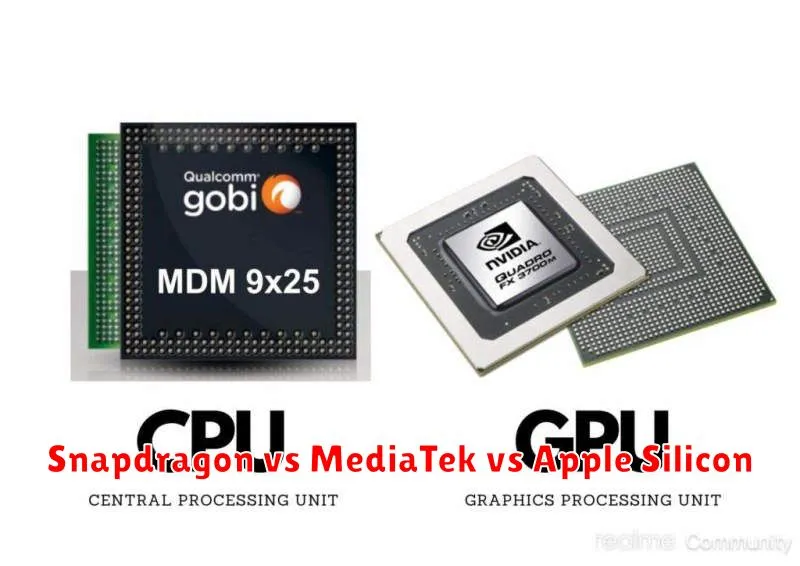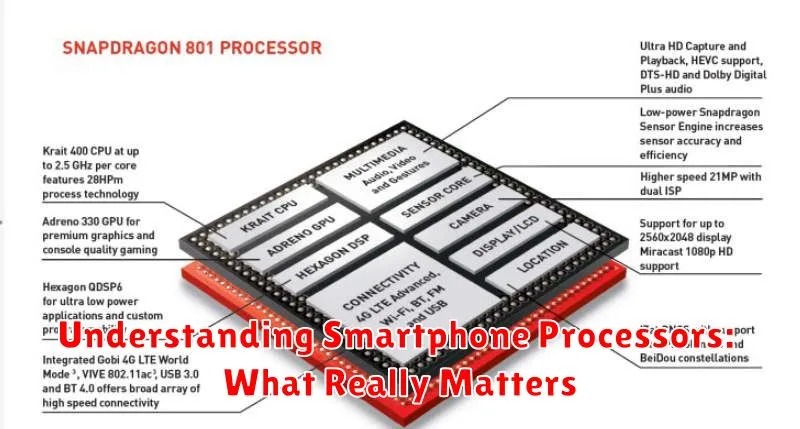In today’s fast-paced digital world, smartphones have become indispensable tools. Choosing the right smartphone can be overwhelming, and understanding the core component, the processor, is crucial. This article will delve into the world of smartphone processors, explaining what truly matters when making a purchase decision. We’ll explore key aspects like CPU, GPU, RAM, and their impact on performance, battery life, and overall user experience. Deciphering technical jargon and understanding benchmark scores will empower you to choose a device that aligns with your specific needs, whether it’s gaming, multitasking, or simply everyday usage.
Beyond the marketing hype, we will uncover the real significance of processor speed, core count, and architecture. Learn how these factors influence the speed and efficiency of your smartphone, allowing you to navigate demanding applications and enjoy a seamless mobile experience. We’ll also address common misconceptions surrounding smartphone processors and provide practical tips for assessing performance. This comprehensive guide will equip you with the knowledge to make informed choices and select the best smartphone processor for your individual requirements.
CPU vs GPU in a Smartphone
While both crucial for performance, the CPU (Central Processing Unit) and GPU (Graphics Processing Unit) play distinct roles. The CPU is the “brain” of the phone, handling general tasks like running apps, managing memory, and processing instructions. It excels at sequential processing, completing tasks one after another.
The GPU, on the other hand, is a specialized processor designed for handling graphics and visually intensive tasks. It’s built for parallel processing, performing multiple calculations simultaneously. This makes it ideal for gaming, video editing, and other tasks demanding high graphical performance.
Think of it this way: the CPU manages the overall operation of the phone, while the GPU focuses on creating and displaying the visuals you see on screen. A powerful CPU ensures smooth multitasking and responsiveness, while a strong GPU delivers stunning graphics and fluid gameplay.
What Does Octa-Core Actually Mean?
The term “octa-core” refers to a central processing unit (CPU) containing eight independent processing units called cores. These cores work together to handle the instructions and tasks that run your smartphone. While having eight cores sounds impressive, it doesn’t automatically translate to superior performance.
Think of it like a factory with eight workers. Having more workers (cores) can be beneficial if they can all work efficiently on different tasks simultaneously. However, if the tasks are poorly managed, or the workers themselves are slow, having more of them won’t necessarily increase overall output.
Octa-core processors can be arranged in different configurations impacting their performance. Some common configurations include having all eight cores similar in speed and power, while others utilize a combination of high-performance and high-efficiency cores to balance power consumption and processing capabilities.
Snapdragon vs MediaTek vs Apple Silicon

The smartphone processor market is dominated by three major players: Qualcomm’s Snapdragon, MediaTek’s Dimensity and Helio series, and Apple’s A-series chips (Apple Silicon). Each offers distinct advantages.
Snapdragon processors are generally known for their strong performance and premium features, particularly in graphics and AI processing. They are often found in flagship devices.
MediaTek offers a wider range of processors, catering to both budget-friendly and high-end devices. They focus on delivering competitive performance and power efficiency.
Apple Silicon is designed specifically for iPhones and iPads, allowing for tight integration between hardware and software. This often results in excellent performance and optimization.
How to Read Benchmark Scores
Benchmark scores offer a quantifiable way to compare smartphone processors. They represent the performance of a device on specific tasks and tests. Understanding these scores involves recognizing their limitations and what they truly represent.
Higher scores generally indicate better performance. However, don’t solely rely on these numbers. Look for comparisons between processors rather than focusing on absolute values. Consider scores across multiple benchmark platforms, as each platform may emphasize different aspects of performance.
Pay attention to the specific tests within a benchmark suite. Some tests focus on CPU performance, while others emphasize GPU or memory speed. This allows you to understand the strengths and weaknesses of a particular processor. Real-world performance may vary depending on the apps and tasks you frequently use.
Do You Need a Flagship Chip?
A flagship chip offers the highest performance, but it comes at a premium. Do you truly need that power? Consider your typical smartphone usage.
If you primarily use your phone for basic tasks like browsing, social media, and light photography, a mid-range processor will likely suffice. These chips offer excellent performance for everyday use at a more affordable price point.
Gamers, heavy multitaskers, and those who frequently use demanding applications like video editing software will benefit most from the raw power of a flagship chip. The enhanced performance translates to smoother gameplay, faster processing, and improved responsiveness.
Performance vs Power Efficiency
A key consideration when evaluating smartphone processors lies in balancing performance and power efficiency. A powerful processor can handle demanding tasks, enabling smooth multitasking and high-quality gaming. However, raw power often comes at the cost of increased energy consumption, leading to reduced battery life.
Power efficiency focuses on minimizing energy usage while maintaining acceptable performance levels. A power-efficient chip can extend battery life significantly, allowing for longer usage between charges. This is particularly important for mobile devices where battery life is a critical concern.
Manufacturers strive to find the optimal balance between these two crucial aspects. Modern processors often incorporate features like variable clock speeds and specialized cores to dynamically adjust performance and power consumption based on the task at hand.
How RAM Complements the Processor
The processor, or CPU, is often referred to as the brain of a smartphone. However, it relies heavily on RAM, or Random Access Memory, for optimal performance. Think of RAM as the processor’s immediate workspace. It stores data and instructions that the processor needs to access quickly.
The larger the RAM, the more information the processor can hold readily available. This allows for smoother multitasking, faster app loading times, and a more responsive overall user experience. Without sufficient RAM, the processor has to constantly retrieve data from slower storage, leading to noticeable slowdowns and performance bottlenecks.

